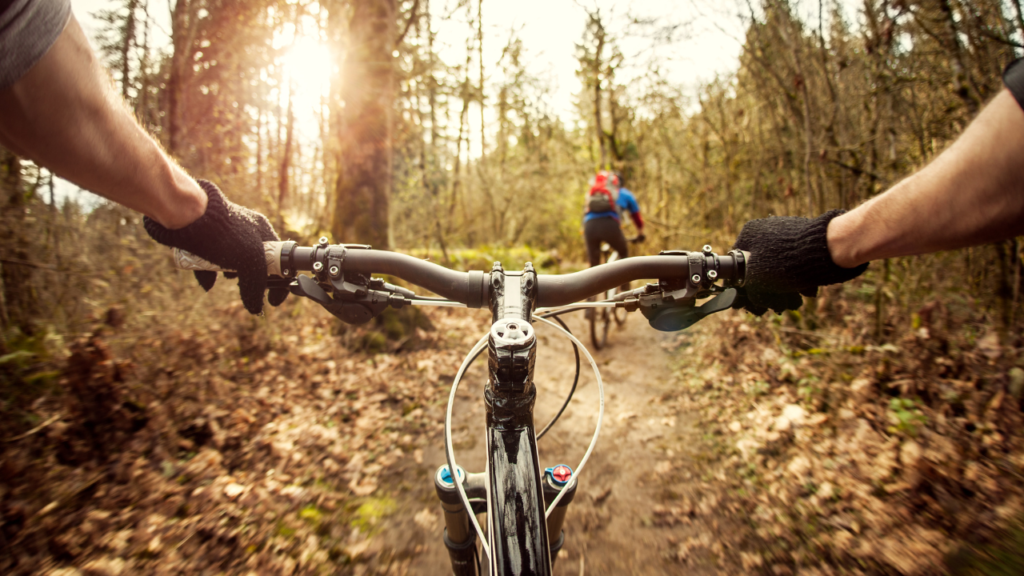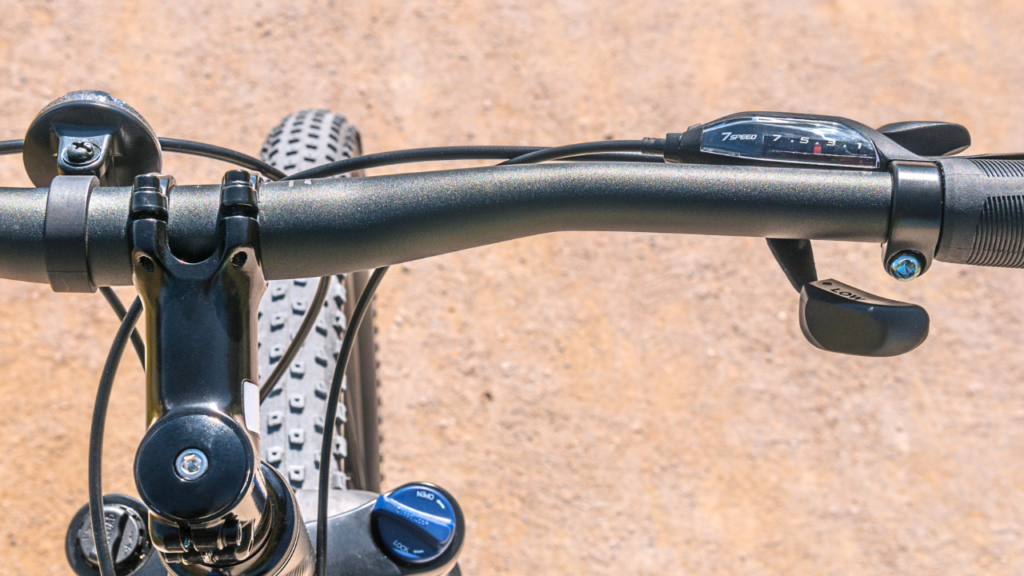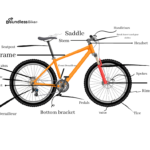Are you tired of feeling cramped and uncomfortable on your mountain bike? Do you wish you could ride with a more upright posture, but don’t know how to make the necessary adjustments? Look no further! In this blog post, we’ll walk you through the steps to raise the handlebars on your mountain bike. Whether you’re a seasoned rider or just starting out, these tips will help improve your comfort and control on the trails. So let’s get started!
Tools required for raising the handlebars on a mountain bike
Tools Required:
- Allen keys
- Bike stand or something to hold the bike steady
- Adjustable stem or a stem with spacers
How to Raise Handlebars on a Mountain Bike?

If you are feeling discomfort in your back, neck, or shoulders when riding your mountain bike, it may be time to raise the handlebars. Here are the steps to follow to raise the handlebars on a mountain bike:
Step 1: Position the Bike Firstly, place your mountain bike in a bike stand or against a wall or any sturdy object, so it’s stable and you can access the stem easily.
Step 2: Loosen the Stem Bolts Use an Allen key to loosen the bolts on the stem that attach it to the steerer tube. Make sure not to remove the bolts completely, as the stem may fall off.
Step 3: Raise the Stem Lift the stem off the steerer tube, and add spacers (if necessary) between the stem and the headset. You can also replace your stem with an adjustable stem, which will allow you to adjust the height and angle of the handlebars.
Step 4: Re-tighten the Stem Bolts Make sure that the stem is straight and aligned with the front wheel, and tighten the bolts on the stem to secure it in place. Do not overtighten the bolts as it could cause damage to the steerer tube.
Step 5: Adjust the Brake and Shift Cables Check the brake and shift cables to make sure they are not too tight or too loose after adjusting the stem. You may need to loosen or tighten them slightly, depending on the new handlebar position.
Step 6: Test the New Handlebar Position Take your mountain bike out for a ride and test the new handlebar position. Make sure that you feel comfortable and in control when riding, and that the new position does not cause any discomfort or pain.
In conclusion, raising the handlebars on your mountain bike can greatly improve your comfort and riding experience, but it’s important to do it correctly to avoid any damage to your bike or injury. If you’re not comfortable doing it yourself, you can always take your bike to a professional bike shop for assistance.
Reasons for raising the handlebars on a mountain bike
There are a few reasons you might want to raise the handlebars on your mountain bike. Maybe you’re swapping out the handlebar for a different style, or maybe you’re just adjusting to a new riding position. Either way, it’s important to know how to properly raise your handlebars.
Here are a few tips on how to raise the handlebars on your mountain bike:
1. Loosen the stem bolts with an Allen wrench.
2. Raise the handlebars to your desired height.
3. Tighten the stem bolts until they’re snug. Be careful not to over-tighten, which can damage the stem.
4. Check that the handlebars are secure by giving them a good shake. They shouldn’t move at all.
How to position the bike for handlebar adjustment?

Before you start to adjust the handlebars on your mountain bike, it’s important to position the bike correctly to make the process easier and safer. Here are the steps to follow to position the bike for handlebar adjustment:
- Find a flat, even surface: Choose a flat, even surface where you can park your bike. Make sure that the surface is stable and can support the weight of your bike.
- Stand the bike upright: Lift the bike up and position it so that it’s standing upright on its wheels. You can also lean the bike against a wall or a sturdy object, but make sure that it’s secure and won’t tip over.
- Adjust the saddle height: Adjust the saddle height so that it’s at the correct height for your body. This will allow you to get a better sense of the bike’s position and adjust the handlebars more accurately.
- Turn the handlebars straight: Turn the handlebars so that they are straight and aligned with the front wheel. This will help you to get a better sense of the bike’s position and make it easier to adjust the handlebars.
- Secure the front wheel: If you’re using a bike stand, secure the front wheel in the stand to keep the bike steady. If you’re not using a bike stand, you can ask someone to hold the bike steady for you while you make the adjustments.
- Ensure safety: Make sure that you have enough space to work on the bike without any obstructions. Also, ensure that your work area is well-lit and that you are wearing appropriate safety gear, such as gloves and safety glasses.
By positioning your mountain bike correctly before adjusting the handlebars, you’ll be able to work more efficiently and safely and achieve the desired handlebar height more easily.
Testing the new handlebar position on a mountain bike
When you’re mountain biking, having your handlebars in the right position is important for both comfort and control. If your handlebars are too low, you’ll be hunched over and uncomfortable. If they’re too high, you won’t have as much control over your bike. The best way to figure out what position works best for you is to experiment.
To test out a new handlebar position, start by loosening the bolts that hold your handlebars in place. Then, adjust the height of your handlebars until they’re in the position you want to test out. Once you’ve got them where you want them, tighten the bolts back up.
Now it’s time to take your bike for a spin and see how it feels. Pay attention to how comfortable you are and how much control you have over your bike. If you’re not happy with the new position, simply adjust your handlebars again until you find a position that works better for you.
Precautions to take when raising the handlebars on a mountain bike
When raising the handlebars on a mountain bike, it is important to take a few precautions in order to avoid injury. First, be sure to loosen the stem bolts before attempting to raise the handlebars. Next, use caution when lifting the handlebars into place, as they may be heavier than expected. Finally, once the handlebars are in place, tighten the stem bolts securely.
Faq
You may need to raise the handlebars if you experience discomfort or pain in your back or neck while riding. It can also help if you want to have a more upright riding position, which can be more comfortable and provide better visibility on the trail.
You will need some basic tools, such as an Allen key set and a torque wrench. It’s also helpful to have a bike stand or a sturdy object to support the bike while you work on it.
Yes, it is safe to raise the handlebars as long as you do it correctly and follow the proper steps. However, it’s important to ensure that the handlebars are securely tightened after the adjustment to prevent any accidents.
Yes, you can lower the handlebars again by reversing the steps that you followed to raise them. However, it’s important to ensure that the stem bolts are properly tightened after each adjustment to prevent any accidents.
Conclusion
Raising your handlebars on a mountain bike is an easy way to give yourself a more comfortable, upright riding position. With the right tools and techniques, you can raise your bars quickly and easily. Be sure to check back often with us for more helpful tips on mountain biking maintenance! Thanks for reading and happy trials!






